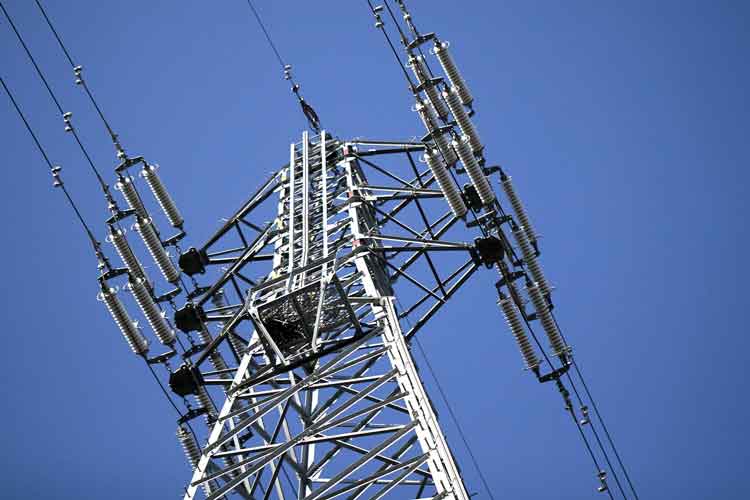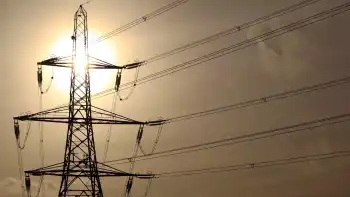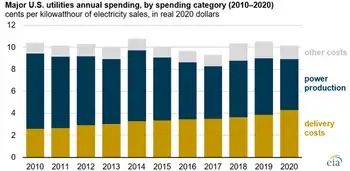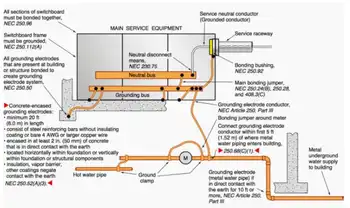Bill seeks to expedite land leases for solar
NEVADA - Solar energy could finally directly contribute to government coffers in Nevada if legislation proposed by Senate Majority Leader Harry Reid and Rep. Dean Heller becomes law.
But some solar companies are wary it could keep them from developing new energy plants if the same approach winds up applied to all Bureau of Land Management property.
The Nevada lawmakers this month introduced the American Solar Energy Pilot Leasing Act of 2010 in their respective houses. The legislation would designate two valleys in Lincoln County as solar pilot project areas where land leases would be auctioned to the highest-bidding solar developers. The legislation calls for Nevada and Lincoln to each get a quarter of the revenue from lease and royalty income from development on the land.
Reid said he wants to make this system the model for all leases of federal land for solar, but whether thatÂ’s the way to go is up for debate. Some in the solar industry fear they could lose their spot in line for land theyÂ’ve been doing studies on and waiting to lease for several years. And energy experts say extending the system to all land could lead to a backlog of parcels waiting to be leased, as happened when geothermal leases were first auctioned in 2007.
Some companies have been working on applications for rights of way to develop solar projects on parcels of BLM land across the southwest for several years. There are 305,000 acres under application in Nevada, according to BLM spokesman David Quick. The companies applying for that land have invested millions of dollars in environmental and resource surveys needed to support the companiesÂ’ development plans as they request permits to build and operate solar power plants. These rights-of-way leases are granted on a first-come, first-served basis.
Some in the solar industry oppose extending the auction process to all BLM land because they say it will slow down the very system it intends to speed up. There are about 9.6 million acres of prime solar land with excellent solar potential within 25 miles of an energy corridor in Nevada, according to BLM records.
But even if all the land under application from solar companies is excluded from the lease auctions, there could still be problems.
It would take years for the BLM to complete environmental studies on all the parcels solar developers want in Nevada. The draft environmental impact statement for the solar energy study zones, for example, was started a year ago and isnÂ’t expected to be completed for a few months. The final decision on whether all or parts of these zones should be made available for solar development isnÂ’t expected until next year.
In the meantime, solar developers are waiting for the land to come to auction. But winning the auction and getting permission to build the plant are two very different things.
The solar developers with the winning bids would still have to submit follow-up environmental assessments to show what impacts their projects would have.
Solar industry experts say they fear that while the parcels for lease are being chosen and evaluated by BLM, demand for land and developersÂ’ impatience will increase, causing the bidding price to skyrocket.
That is what happened in 2008 and 2009 when geothermal leases began to be auctioned by the BLM. The average price per acre in 2008 was $266, compared with about $13 an acre this year. Bids of $1,000 or more per acre have been placed every year since the auctions began, and the bidding was so frenzied in the 2009 auction it produced a record bid of $3,800 an acre.
The lease frenzy has since calmed, but solar developers say they donÂ’t have wiggle room in their budgets for pricey leases. Solar energy is already far more expensive than other types of renewable energy.
Further price increases would send electric utilities running to wind farms and hydropower, they say.
And they donÂ’t have time to wait for the prices to fall. Getting a project out the door quickly is key in the renewable energy business, where developers are scrambling to roll out projects in time for states such as California to meet their renewable energy portfolio standards. And the addition of just a couple of months, let alone a couple of years, could mean the difference between getting pivotal federally backed financing, tax credits and other incentives or nothing at all.
Reid and Heller, a Republican, are proposing two BLM tracts in Lincoln County — 10,945 acres in Dry Lake Valley and 2,845 acres in Delamar Valley — for solar development with expedited permitting.
Under the plan, solar developers would bid at auction for leases on parcels in designated solar development zones and would be expected to pay royalties on any income they generate there, although the legislation also allows for deferral or reduction of royalties for the first five years of the lease. The land is considered more valuable because the BLM will have completed most of the requisite resource analyses and environmental impact studies.
ItÂ’s not just the money that would go to the state and the county that makes this important. Fifteen percent of the revenue from leases, fees and royalties would go to BLMÂ’s renewable energy permit processing centers in Nevada, and 35 percent would be fed into a fund to mitigate the impacts of renewable energy development on public land in the state and county.
The system is modeled after that used for geothermal energy and mineral land leases on public land across the nation.
With the geothermal lease auctions, half of lease, fee and royalty revenues go to home states and a quarter of the revenues to home counties, with geothermal developers responsible for mitigation.
Since the law was implemented in 2007, Nevada counties have taken in nearly $17.8 million and the state has gotten about $35.6 million.
But efforts by Reid and Sen. John Ensign, R-Nev., to extend that revenue-sharing system to all wind and solar development on public land have failed to gain traction in Congress because they are attached to controversial environmental and energy bills.
Instead, Reid has focused his attention on this latest bill, which could serve as a model for future solar development on public land.
Both Lincoln County parcels are in areas designated in 2009 as “solar energy study areas,” vast stretches of prime solar development land that were evaluated by the BLM for environmental impacts and suitability for solar development. That land was intended to be split into parcels, the leases to which could be auctioned.
Solar energy study areas are scattered across several southwestern states and Colorado. In addition to the Dry Lake and Delamar Valley research study areas, there are six other solar energy research study areas in Nevada — near Amargosa Valley, south of Goldfield, west of Tonopah, north of Bunkerville and west of Lida Junction south of the Goldfield area.
The intent is to lease the best parcels within these areas to large-scale solar developers.
In this case, ReidÂ’s office worked with Lincoln County officials, environmentalists and hunters to zero in on the places where solar energy could be developed with the least detriment to people and wildlife.
The BLM is completing a draft comprehensive environmental impact statement that encompasses all the designated solar study areas, including the land proposed for the solar pilot project areas in this bill. The draft report should be completed this year, with the final record of decision on whether solar power is the best use of the land expected in 2011.
Currently solar developers cannot simply sign a lease for approved BLM land, but instead must undergo extensive application and permitting processes to get a lease through the existing rights-of-way process.
This process is designed for less exclusive land uses such as livestock grazing or laying pipes or transmission lines in slim corridors, but has been adapted by the BLM to solar and wind projects because the agency lacks any other congressionally mandated process.
The BLM recently released the first rent and royalties schedule for solar projects on its land. ItÂ’s based on the electrical capacity of the planned solar plant and rural agricultural land values in the home county.
Because of vast differences in land values in rural counties across the United States, rental rates on BLM rights of way vary greatly, from $7.85 per acre in Elko County to $3,139 per acre in Richmond County, N.Y.
Land in most Nevada counties, under existing leases of rights of way, would be rented for less than $50 per acre in 2010, but spike in mining country. Rent on BLM land in Storey County, for example, is $942 an acre this year.
Energy experts say the rents donÂ’t reflect the high value of land for new uses, such as solar and wind development. In Clark County, where land prices are high and solar development is expected to flourish, land would be rented for $94.17 an acre this year. But in nearby Lincoln County, which has tens of thousands of acres of land conducive to solar development, the rent would be just $15.69 an acre.
Under the proposed plan, the BLM would put the leases on the auction block, potentially raising the per-acre rent significantly.
But depending on the price, solar developers could recoup that added rent cost by spending less on site selection. Much of the key environmental assessments and resource studies on these parcels will have been completed by the BLM. This could save developers critical time and resources and give them a timing advantage over competition for power purchase agreements with utilities here and in California.
Related News

Heathrow Airport Power Outage: Vulnerabilities Flagged Days Before Disruption
LONDON - On March 21, 2025, Heathrow Airport, Europe's busiest, suffered a catastrophic power outage that led to the cancellation and diversion of over 1,400 flights, affecting nearly 300,000 passengers and costing airlines an estimated £100 million. The power failure, triggered by a fire at an electricity substation in west London, left Heathrow with a significant operational crisis. This disruption is even more significant considering that Heathrow is one of the most expensive airports globally, which raises concerns about its infrastructure resilience.
In a parliamentary committee meeting, Heathrow officials admitted that vulnerabilities in the airport’s power supply were flagged just…




